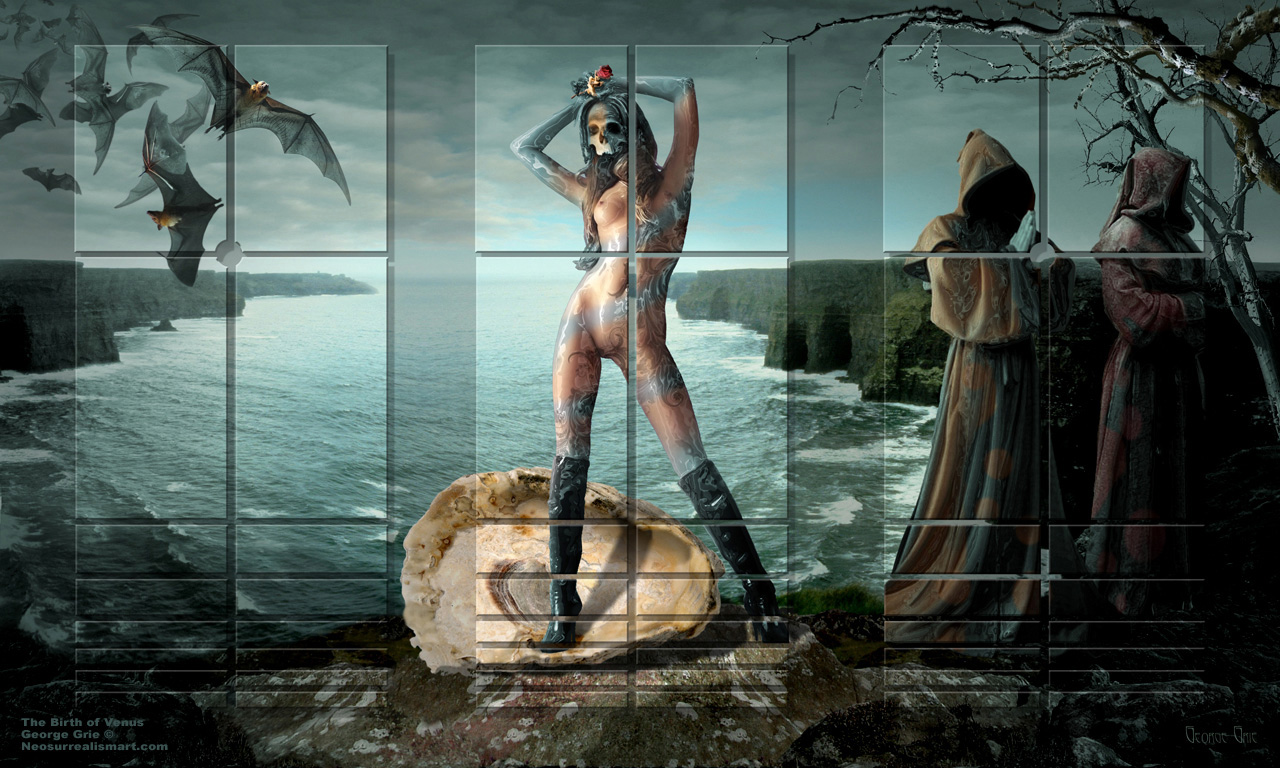

The Birth of Venus: Gods and Heroes series


This image evolved as a result of my reflection on a well-known Italian Renaissance painting ‘The Birth of Venus’ by Sandro Botticelli. It depicts Venus, the goddess of beauty, as a young woman arriving at the seashore. Of all possible interpretations of the painting, art historians are more inclined towards a platonic school explanation.
Gods & Heroes Series:
The Three Graces, surreal art print
The Birth of Venus, surreal art wallpaper
Moonlight Bathing Valkyries, surreal art poster
For the members of the Florentine Platonic Academy, so-called neo-Platonists, the earthly beauty of Venus was meant to instill a physical response in viewers, whereas her heavenly divinity was aimed at inspiring intellectual appreciation and spiritual uplifting. In other words, they believed that contemplation of physical beauty would open the mind to a better understanding of spiritual beauty. Sandro Botticelli’s time, the Florentine Renaissance, is very characteristic of combining religion and mythology, Christian and pagan traditions. ‘The Birth of Venus’ is an excellent example: it shows a motive from the classical Greek folklore with a philosophical perspective on the divine origin of female beauty.
But this approach was just one of the many. There were avid antagonists to Renaissance values, such as Girolamo Savonarola, an Italian Dominican priest and Florentine leader. In 1497 he set up “bonfires of vanities” in which he destroyed trappings of luxury and excesses he preached against: makeup, jewellery, hairpieces, “lewd” paintings, books, non-religious statues and sculptures – everything that he considered immoral and sexually implicit. Many fine Florentine Renaissance artworks, including Sandro Botticelli’s, were lost in Savonarola’s notorious bonfires. Allegedly, some of his paintings Botticelli had thrown into the fires himself. “The Birth of Venus” escaped the flames being hidden in a Medici villa outside Florence.
History repeated itself: Father Savonarola was excommunicated and subsequently executed in the same place where the "bonfire of vanities" had been lit. This image is an attempt to toss away every ethical, philosophical, and theological value that might suit today, but fail tomorrow. Isn’t it always the case with contemporary art? However, I believe this picture to be unfinished, and one day I intend to return to it, both conceptually and graphically. Sandro Botticelli Prints and Posters
Software media: Adobe Photoshop, Adobe Illustrator, Autodesk 3ds Max, Smith Micro Poser, Photo Stock, Daz Studio, Bryce, Painter X
George Grie, June 2010
Italian Renaissance classic painting allegory philosophy religion seascape monk bat seashore Goth Greek mythology medieval history Gothic fantasy landscape female scene posing creature evil dressed darkness skull skeleton artist digital 3d photography matte painting computer, woman dangerous model beauty classic body figure, gloom surreal artistic allegorical, Surrealism art gothic Neosurrealism wallpaper 2d photo poster mystic print, seductive metaphor viewpoint analysis meaning myth study interpretation story symbol
The Birth of Venus: Gods and Heroes series | surreal renaissance
The Birth of Venus: Gods and Heroes series | surreal renaissance
The Birth of Venus: Gods and Heroes series | surreal renaissance